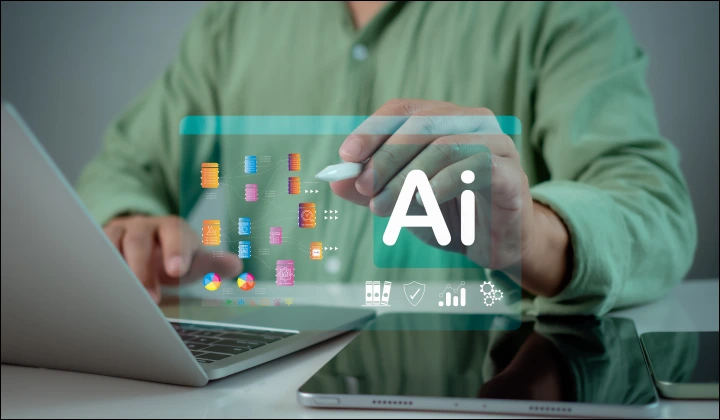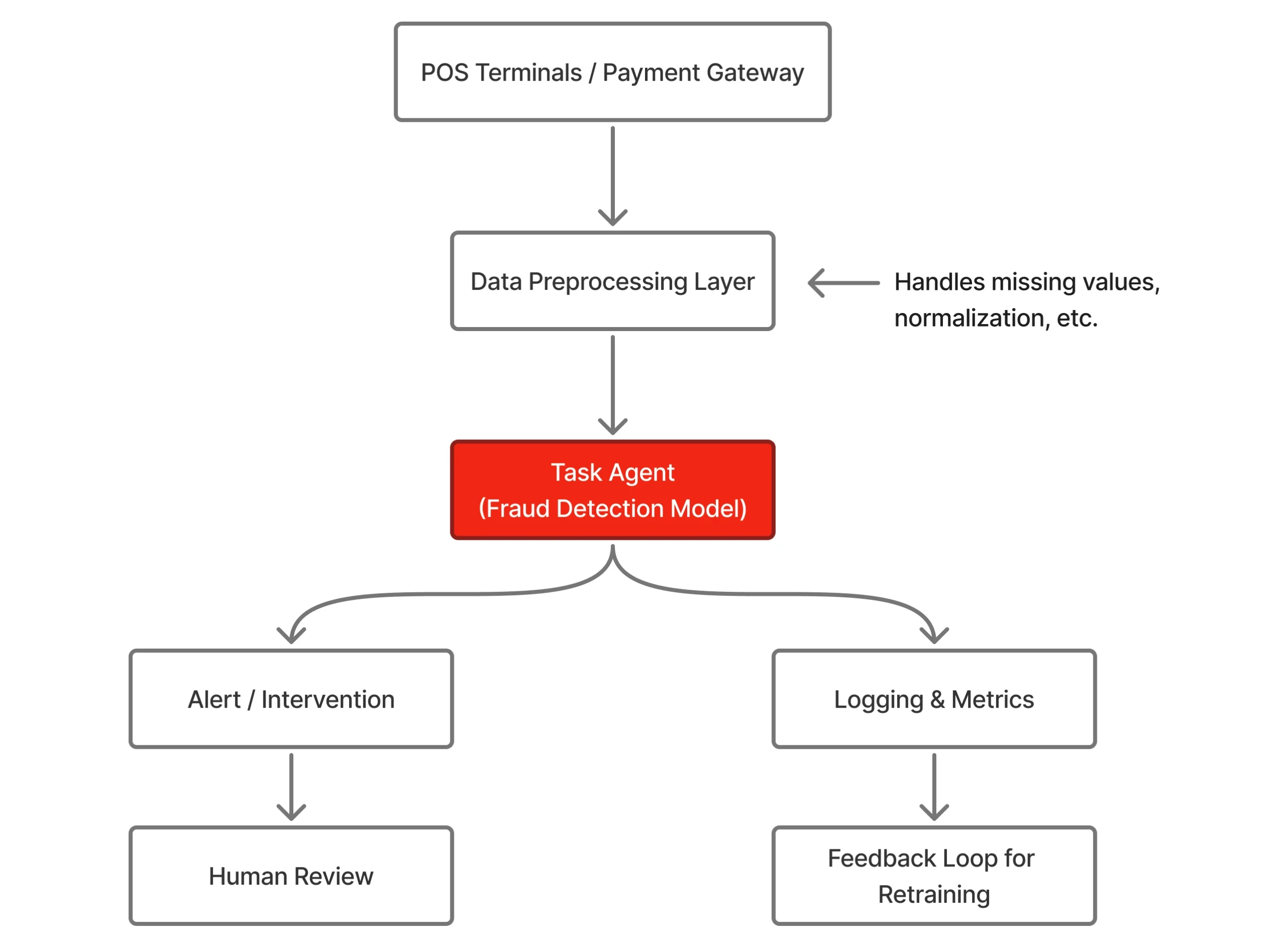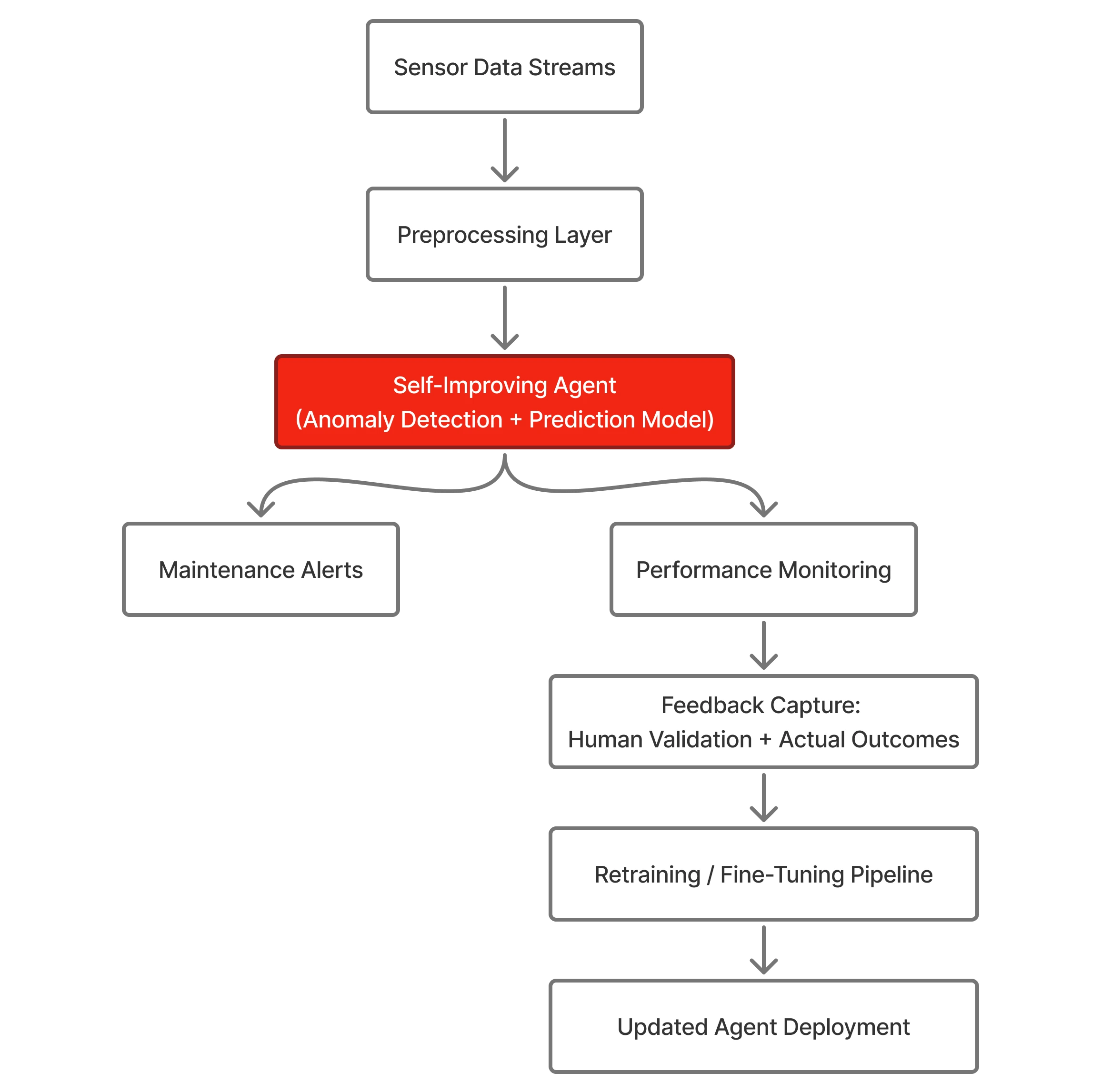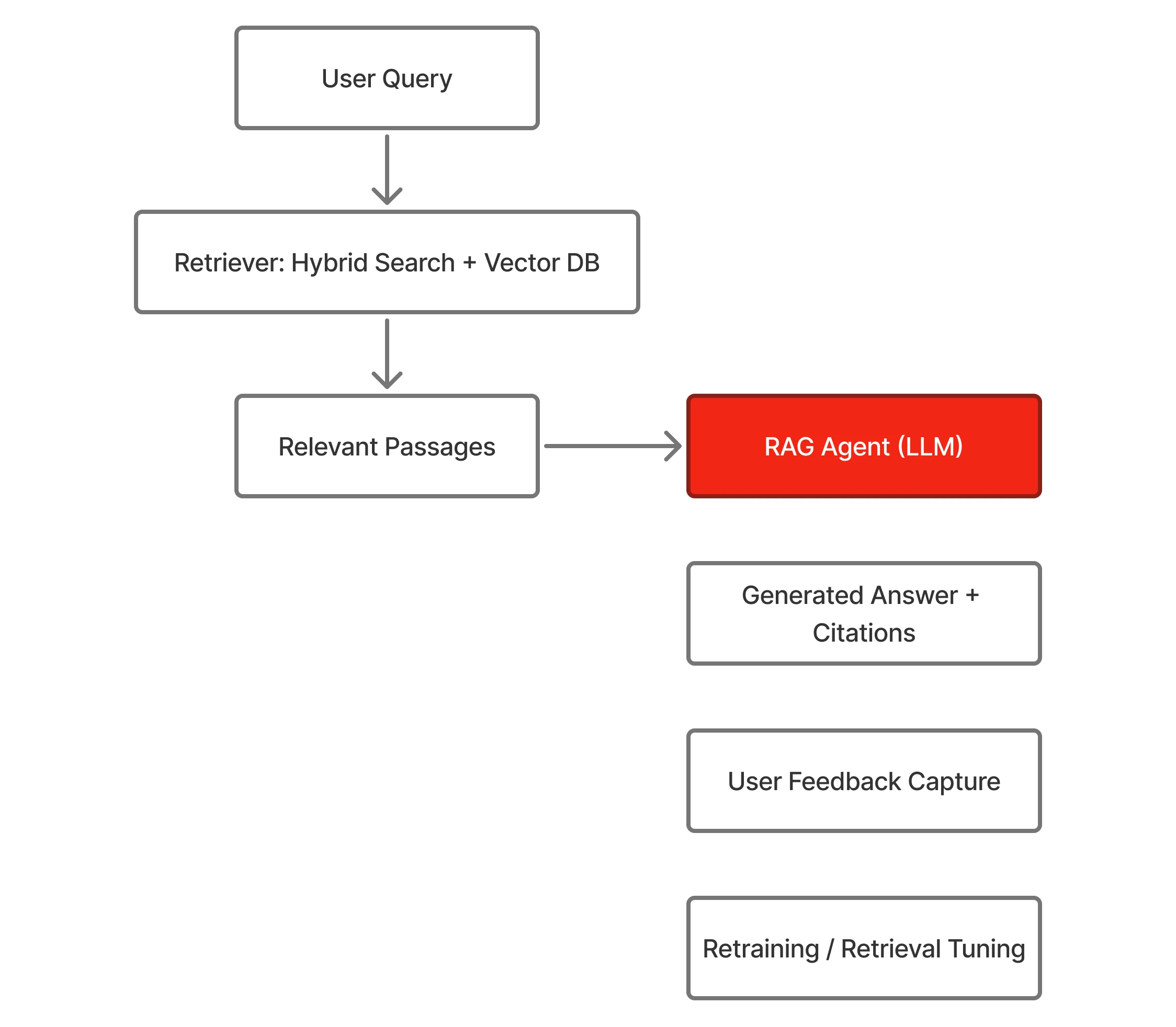 14 mins
14 mins
Jun 09, 2025

When I advise enterprises on AI adoption, one thing becomes clear quickly: most people looking up “agentic AI design patterns” end up reading about academic patterns like Reflection, Tool Use, ReAct, Planning, and Multi-Agent.
These patterns describe cognitive behaviors like how an AI thinks, plans, or interacts. They’re fascinating, but they rarely translate directly into systems that work reliably in enterprise workflows.
From where I sit as a CTO, enterprises need patterns that are actionable, scalable, and aligned with business objectives.
That’s why I focus on practical design patterns like Task-Oriented Agents, Multi-Agent Collaboration, Self-Improving Agents, RAG Agents, and Orchestrator Agents. These are built for real-world implementation.
Here’s a quick mapping of research patterns to practical enterprise analogs:
| Reflection | Agent reviews its own actions to improve reasoning | Self-Improving Agent (feedback loops, iterative learning) |
| Tool Use | Agent calls external tools or APIs to achieve tasks | Orchestrator-Agent / Task-Oriented Agent (integrates external services) |
| ReAct | Agent combines reasoning and action in a single step | Task-Oriented Agent with integrated decision-making |
| Planning | Agent generates multi-step plans before acting | Multi-Agent Collaboration or Orchestrator-Agent (workflow sequencing) |
| Multi-Agent | Multiple agents interact or collaborate to solve problems | Multi-Agent Collaboration (modular, role-based agents) |
Both perspectives are valid.
The research lens helps us understand what AI can do, while the enterprise lens guides how to deploy AI effectively in real workflows.
So, let’s walk through the practical agentic AI design patterns I recommend for enterprise AI initiatives.
These design patterns represent the approaches we’ve seen succeed repeatedly: they help AI agents act decisively, collaborate effectively, and adapt to changing business needs.
A task-oriented agent focuses on automating or assisting a single high-value, data-intensive task.
It helps organizations to start small but deliver measurable ROI, while providing a controlled environment to validate AI effectiveness before scaling to more complex workflows.
1. The agent must connect seamlessly with existing data pipelines, databases, and APIs.
2. Must account for missing, noisy, or delayed data, with built-in validation and error recovery.
3. Track task-specific KPIs (accuracy, latency, throughput, etc.) to monitor performance and enable continuous improvement.
4. Architect the agent so new sub-tasks or data sources can be added without major re-engineering.
Task: Detect fraudulent transactions in real-time.
Agentic Workflow:
→ Collect transaction data from POS terminals and payment gateways.
→ Preprocess and normalize the data (missing fields, inconsistent formats).
→ Apply predictive models for anomaly scoring.
→ Flag suspicious transactions for review or trigger automated interventions.
→ Log decisions, feedback, and outcomes for retraining and auditing.
Architecture Diagram of Task-Oriented Agent:

Think of this agentic AI design pattern as a “team of AI specialists.” Each agent has its own role – one ingests data, another analyzes, another optimizes, and another explains results.
Instead of one giant AI trying to do everything, you let multiple agents work together, just like departments in an enterprise.
1. Each agent must have a well-scoped task to avoid duplication and confusion.
2. Decide how agents exchange information (via shared memory, APIs, or message queues) and keep it consistent.
3. Log every handoff between agents so you can trace why a decision was made.
4. Design the system so new agents can plug in without disrupting the whole workflow.
5. If one agent fails, there should be fallback paths or error-handling so the system remains resilient.
Task: Forecast demand and optimize pricing
Agentic Workflow:
→ Ingestion Agent: Pulls sales and inventory data from ERP and POS systems.
→ Forecasting Agent: Predicts demand for each product.
→ Optimization Agent: Suggests best pricing based on demand and margin targets.
→ Policy Agent: Checks compliance (discount rules, contracts, regulations).
→ Explainer Agent: Generates a clear summary for decision-makers.
Architecture Diagram of Multi-Agent Collaboration:


A self-improving agent is designed to monitor its own performance, learn from outcomes, and adapt continuously.
Unlike static AI models that degrade over time, these agents use feedback loops (human or system-driven) to stay relevant, accurate, and business-aligned.
1. Design multi-source feedback loops.
2. Use online learning, reinforcement learning, or periodic fine-tuning pipelines depending on the use case.
3. Updates must be transparent and auditable to meet enterprise compliance standards.
4. Implement monitoring for data drift, concept drift, and performance decay, with rollback mechanisms.
5. Self-improvement should follow governed release cycles with checkpoints.
Task: Predict equipment failure before it happens.
Agentic Workflow:
→ Ingest live sensor data (vibration, temperature, pressure).
→ Apply anomaly detection models for early failure signals.
→ Continuously compare predictions with actual outcomes.
→ Adjust models using reinforcement signals (true positives, false alarms, missed detections).
→ Trigger retraining pipelines when drift is detected, updating the deployed agent seamlessly.
Architecture Diagram of Self-Improving Agent:

RAG agent enhances generative AI by retrieving relevant information from enterprise knowledge sources at runtime.
This means, instead of relying only on what the model was trained on, the agent grounds its responses in up-to-date, context-specific data, which makes this agentic AI design pattern more accurate and reliable for enterprise use.
1. Combine keyword-based search with vector embeddings for both recall and precision.
2. Continuous ingestion of new or changed documents to avoid outdated responses.
3. Enforce enterprise-grade permissions so retrieval respects data governance rules.
4. Always provide sources and references for generated answers.
5. Track latency, retrieval accuracy, and groundedness scores to maintain trust.
Task: Provide employees with instant and updated answers about company policies and compliance procedures.
Agent Workflow:
→ Ingest and index enterprise documents (PDFs, wikis, SharePoint).
→ At query time, retrieve the most relevant passages.
→ Ground the LLM response in retrieved content.
→ Return the answer along with citations.
→ Capture user feedback to improve retrieval quality.
Architecture Diagram of RAG Agent:

Our Valuable Insights on RAG:
1. RAG AI agent
An orchestrator agent coordinates multiple agents, services, and external systems to execute complex workflows end-to-end.
The orchestrator manages sequencing, retries, priorities, error handling, and observability so individual agents focus on their domain expertise.
1. Define clear, versioned workflow definitions with conditional branches and compensation steps.
2. Implement structured retries, backoff, circuit breakers, and escalation paths.
3. Capture end-to-end traces, decision logs, and outcome metrics for compliance and debugging.
4. Embed approval steps, access checks, and throttling at orchestration time.
5. Use adapter patterns for external systems so integrations swap without changing workflow logic.
6. Insert review and override points for high-risk or ambiguous cases.
Task: Coordinate application intake, identity verification, credit scoring, underwriting, and final approval.
Agent Workflow:
→ Receive application and validate input.
→ Trigger the identity verification agent and wait for the result.
→ Parallelize credit scoring and fraud checks.
→ Aggregate results, apply underwriting rules, and route for human review when rules flag exceptions.
→ On approval, invoke downstream systems for disbursal and record the entire transaction for audit.
Architecture Diagram of Orchestrator Agent:

Agentic AI design patterns are reusable architectural approaches for building enterprise-ready AI agents. They describe how agents can be structured – task-oriented, collaborative, self-improving, retrieval-augmented (RAG), or orchestrated – to solve specific business challenges.
They provide a proven blueprint for implementing AI in complex, real-world enterprise workflows. This reduces experimentation risks, accelerates adoption, and ensures scalability, compliance, and integration with legacy systems.
Most enterprises start with Task-Oriented Agents for high-volume, repeatable processes (e.g., invoice processing, predictive maintenance). As maturity grows, they layer on collaborative, RAG, and orchestrator patterns.
Academic patterns focus on research problem-solving structures, while enterprise design patterns are implementation-focused – tailored for governance, compliance, scalability, and integration into real-world systems.
A RAG (Retrieval-Augmented Generation) Agent combines knowledge retrieval with reasoning. It ensures agents can access enterprise documents, policies, and real-time data securely, making outputs accurate, explainable, and context-aware.
1️⃣ Agentic AI: AI systems designed to take autonomous actions toward goals, often in dynamic enterprise environments.
2️⃣ Task-Oriented Agent: An AI agent focused on executing a specific task with clear input/output boundaries.
3️⃣ Collaborative Agent: Multiple agents (or humans + agents) working together, often sharing goals, context, or tasks.
4️⃣ Self-Improving Agent: An agent with built-in feedback loops and retraining pipelines to adapt continuously.
5️⃣ RAG Agent (Retrieval-Augmented Generation): An agent that combines retrieval of enterprise knowledge with generative reasoning for accurate and contextual responses.
6️⃣ Orchestrator Agent: The control layer that manages multi-agent workflows, dependencies, retries, and governance.